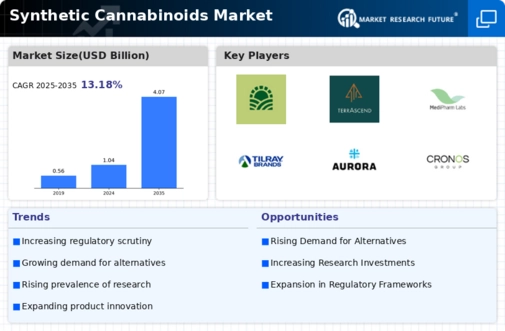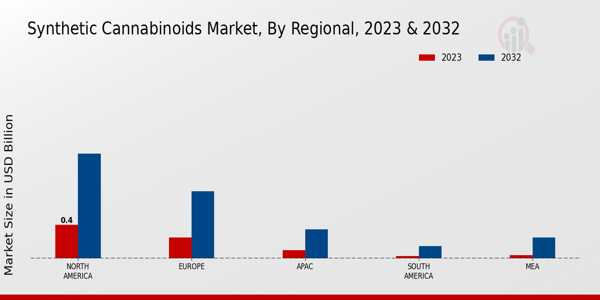Market Growth Projections
Growing Awareness and Education
Growing awareness and education regarding the benefits of synthetic cannabinoids are driving the Global Synthetic Cannabinoids Market Industry. As healthcare professionals and consumers become more informed about the therapeutic potential of these substances, demand is expected to rise. Educational initiatives aimed at dispelling myths and providing accurate information about synthetic cannabinoids are crucial in fostering acceptance. This increased understanding may lead to higher adoption rates among patients and healthcare providers alike. Consequently, the market is likely to witness substantial growth, as informed consumers seek out synthetic cannabinoid products for their health and wellness needs.
Expansion of E-commerce Platforms
The expansion of e-commerce platforms is transforming the Global Synthetic Cannabinoids Market Industry by providing consumers with convenient access to a wide range of products. Online retailing allows for greater product visibility and enables consumers to explore various synthetic cannabinoid options from the comfort of their homes. This trend is particularly relevant in regions where traditional retail channels may be limited. As e-commerce continues to grow, it is expected to facilitate market penetration and increase sales. The convenience and accessibility offered by online platforms are likely to attract new customers, contributing to the overall growth of the synthetic cannabinoids market.
Innovations in Product Development
Innovations in product development are playing a crucial role in shaping the Global Synthetic Cannabinoids Market Industry. Companies are investing in research to create new formulations that enhance the efficacy and safety of synthetic cannabinoids. This includes the development of various delivery methods, such as edibles, oils, and vaporizers, which cater to diverse consumer preferences. The introduction of novel products is likely to attract a broader audience, thereby expanding the market. As the industry evolves, it is anticipated that the compound annual growth rate (CAGR) will reach 13.22% from 2025 to 2035, reflecting the increasing consumer interest in innovative cannabinoid products.
Rising Demand for Alternative Therapies
The Global Synthetic Cannabinoids Market Industry is experiencing a surge in demand for alternative therapies, particularly among patients seeking relief from chronic pain and other medical conditions. As traditional pharmaceuticals face scrutiny due to side effects, synthetic cannabinoids are emerging as viable options. The market is projected to reach 1.04 USD Billion in 2024, driven by increasing acceptance of cannabinoid-based treatments. This trend is particularly pronounced in regions where medical cannabis is legalized, suggesting a growing recognition of synthetic cannabinoids as effective therapeutic agents. The potential for these products to address unmet medical needs is likely to further propel market growth.
Regulatory Developments and Legalization
Regulatory changes across various countries are significantly influencing the Global Synthetic Cannabinoids Market Industry. As governments reassess their stance on cannabis-related substances, the legalization of synthetic cannabinoids for medical and recreational use is becoming more common. This shift is expected to enhance market accessibility and consumer acceptance. For instance, jurisdictions that have implemented favorable regulations have witnessed increased sales and product innovation. The evolving legal landscape may contribute to the market's expansion, potentially leading to a valuation of 4.07 USD Billion by 2035, as more consumers turn to synthetic cannabinoids for both therapeutic and recreational purposes.










